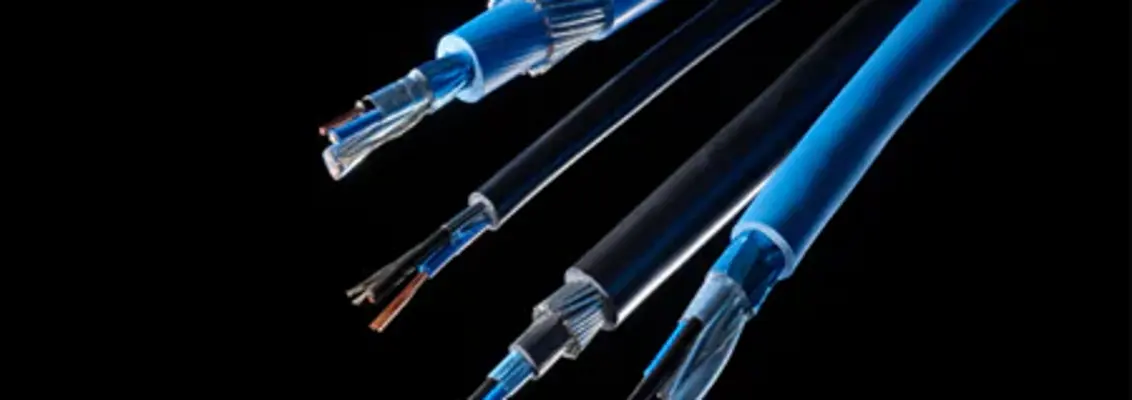Guide to Choosing Electric Cables
Choosing the Right Path: How to Select Quality Electric Cables for Industrial Success

- Boost energy efficiency: Selecting quality electric cables improves energy efficiency and reduces operational costs.
- Reduce failures and maintenance costs: Low-quality cables increase the risk of failures and expensive repairs.
- Lower the risk of accidents: Faulty cables are linked to workplace electrical accidents.
The Importance of Choosing the Right Electric Cable for Your Project
When executing a project in any industrial sector, one of the most critical decisions is choosing the right cable. It plays a key role in energy and data transmission, and the right selection can be the difference between a project's success and failure.
In this article, we explore what to consider and the features and benefits of choosing the ideal electric cable, as well as their applications across various industrial sectors.
1. Understand Your Technical Requirements
Before selecting an electric cable, it's essential to understand your specific electrical needs. Consider the maximum current the cable must support, operating voltage, frequency, and any other relevant electrical factors. This will help determine the appropriate gauge and load capacity for the cable.
2. Assess the Installation Environment
It's crucial to consider the environment where the electric cables will be installed. Factors like ambient temperature, humidity, chemical exposure, or sunlight can impact cable performance and lifespan. Make sure to choose cables designed to withstand the specific conditions they'll be used in.
In construction, for example, cables must be resistant to fire and chemical agents.
3. Understand Cable Properties
Familiarize yourself with the cable's features and properties. Pay attention to aspects like abrasion resistance, fire resistance, flexibility, chemical resistance, and water resistance rating. These properties ensure the cable is suited for its intended use and meets safety standards.
In industrial automation, for instance, cables must be highly flexible and abrasion-resistant to endure the constant movement of machines and equipment.
4. Consider Quality and Certifications
Always opt for high-quality electric cables from trusted and respected industry suppliers. Verify that the cables are certified and meet safety and quality standards set by recognized organizations. This ensures compliance and safety in their use.
5. Load Capacity and Resistance
Make sure the selected cable has the appropriate load capacity to carry the required current without overheating. Also, consider its mechanical strength to ensure it can handle stress and movement without damage.
In the renewable energy sector, cables must be designed to withstand extreme weather conditions and offer low resistance to energy transmission.
6. Consult the Experts
If you have doubts or specific questions, consult electric cable experts or reliable suppliers. They can offer personalized guidance based on your application and specific requirements.
Types of Electric Cables to Consider for Your Next Projects
Flexible Control Cables
Designed to withstand harsh conditions and offer high flexibility. They consist of multiple insulated conductors, protected by a durable outer sheath. This construction allows them to resist repeated bending and twisting without damage, making them ideal for applications where cables are constantly moving.
Examples: JZ-500, JZ-600, and TRAYCONTROL® 600 – C (UL)
Data and Instrumentation Cables
Transmit low-voltage digital and analog signals between equipment and sensors in industrial environments. These cables consist of internal conductors, insulation, and a protective outer sheath that ensures signal integrity and shields against interference.
Examples: TRONIC-CY (LiY-CY), TRAYCONTROL® 300 (UL), and HELUDATA® EN-50288-7
VFD and Servo Motor Cables
Specifically designed to connect variable frequency drives (VFDs) to high-power motors, allowing precise control of motor speed and torque.
Servo motors, on the other hand, are motion control devices that provide high precision in motor positioning and speed. VFD and servo cables work together to ensure efficient and reliable industrial machinery control.
Examples: TOPFLEX®-EMV-2YSLCY-J, TOPFLEX®-EMV-3-PLUS-2YSLCY-J, and TOPFLEX® 600 VFD (UL)
Drag Chain Cables
These cables are engineered to endure repetitive movements, bends, and stresses in dynamic industrial settings. They enable power and data transmission through the drag chain, ensuring reliable connections between machinery components and automated systems.
Examples: JZ-HF (PVC), MULTISPEED 500-PVC (PVC), JZ-HF-CY (PVC), and MULTISPEED 500-PUR (PUR)
Final Takeaway
The use of electric cables across different industrial sectors highlights the importance of selecting cables tailored to each application. Investing time and resources in choosing the right cable results in more efficient, durable outcomes—maximizing the potential of any industrial project.
